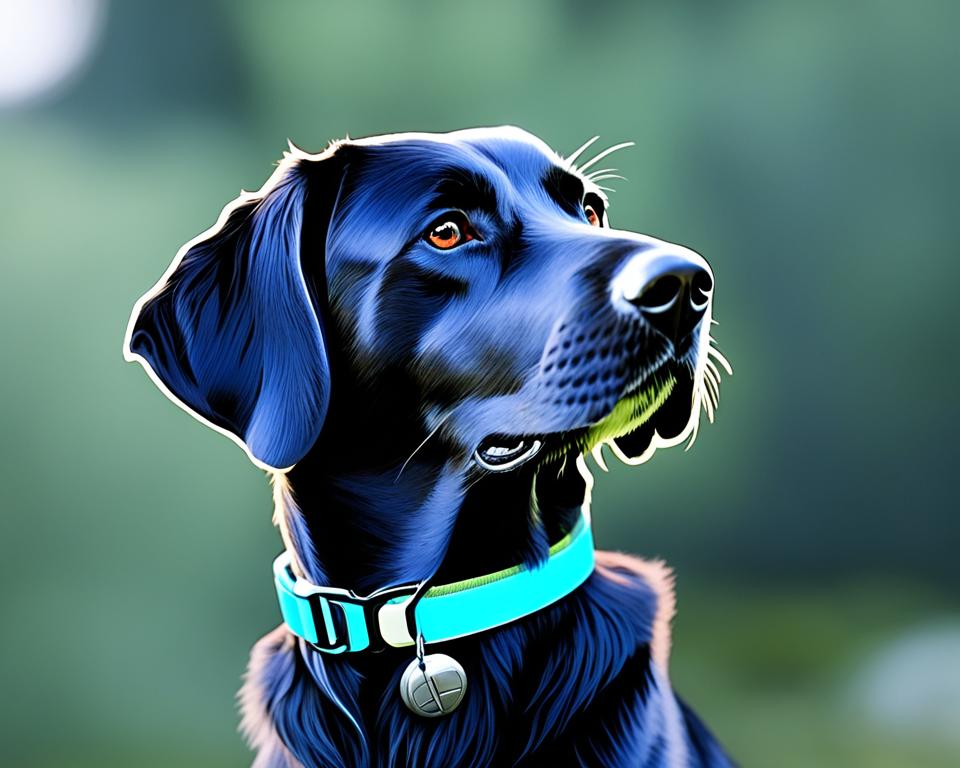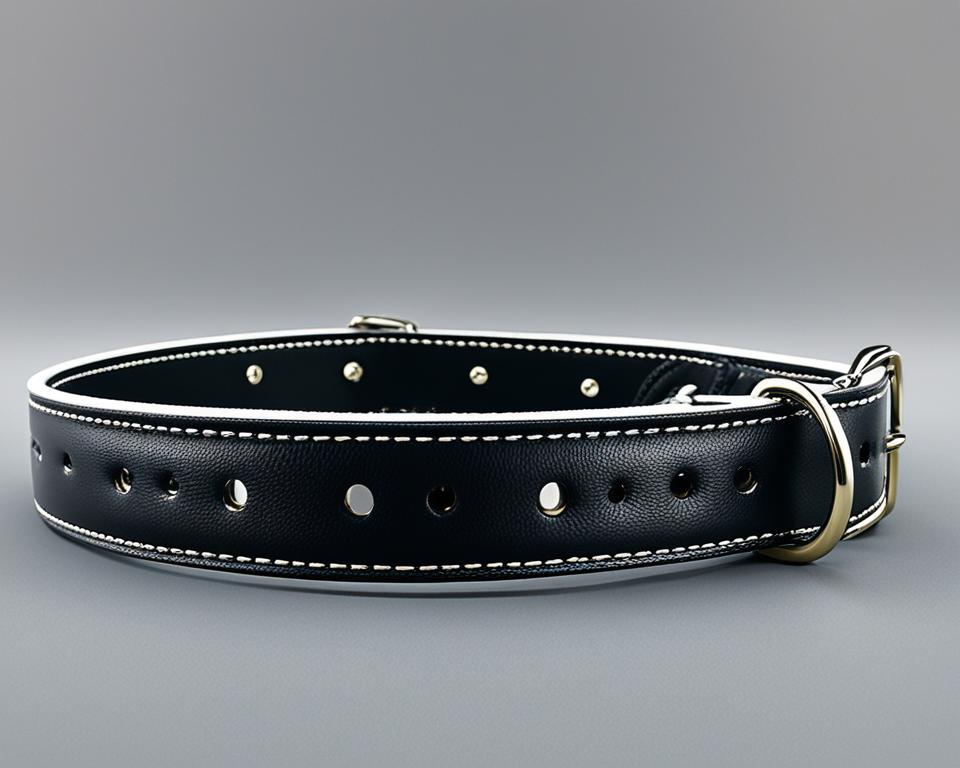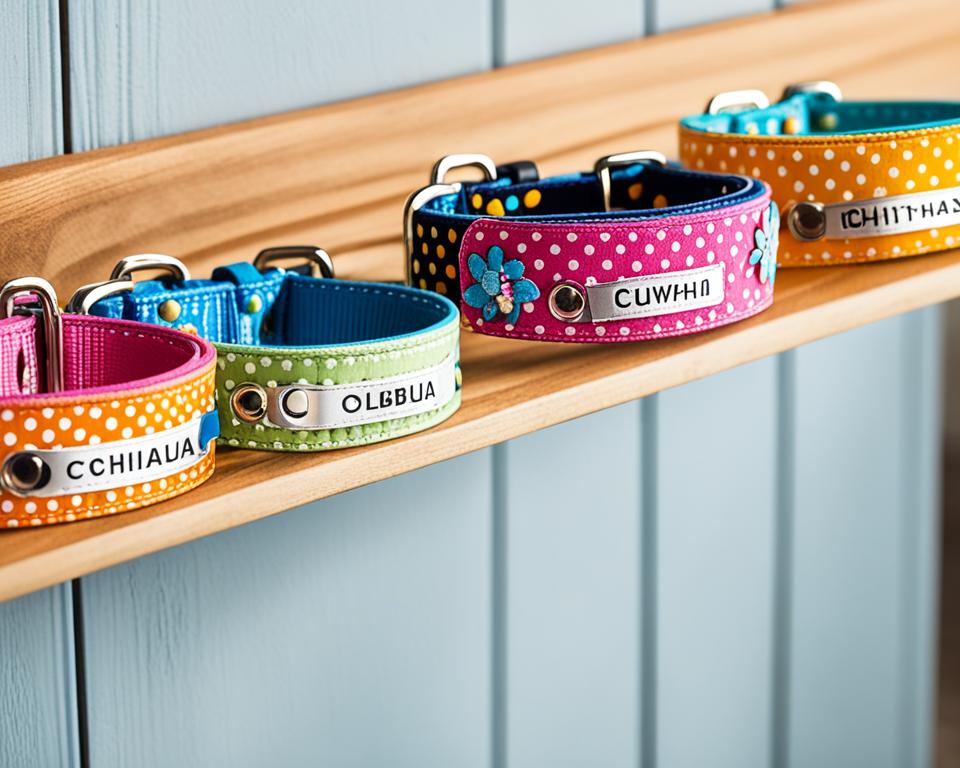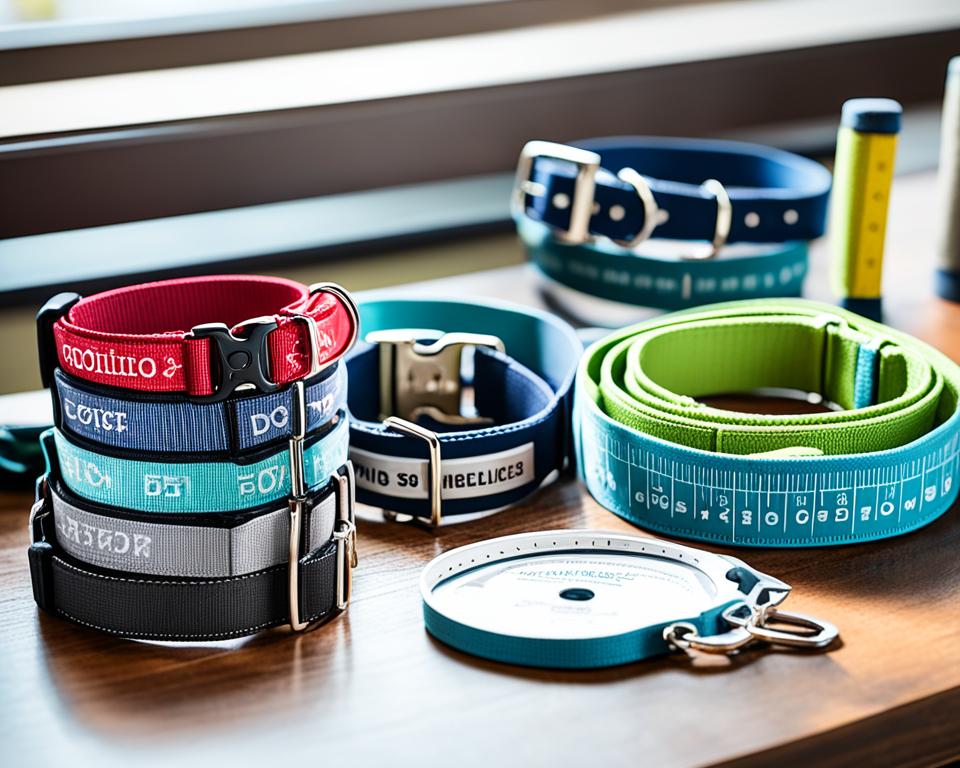Finding the right dog collar is key for your pet’s health. It’s not just about looks; it’s about safety, comfort, and usefulness. As a dog owner, I’ve learned the importance of picking the right one.
Dog collars are made from many materials, like nylon and leather. Each has its own good points. The flat collar is a top pick for dogs that pull a lot. It makes sure your dog is comfy while walking.
Getting the right size for your dog’s collar is important. I always check if I can fit two fingers between the collar and my dog’s neck. This keeps the collar from being too tight or too loose. Since puppies grow quickly, you’ll need to adjust the collar often.
Collars do more than just look good. They hold ID tags and licenses, which are often needed in public places. The right collar can really help your dog stay safe and comfy.
Understanding the Importance of a Proper Dog Collar
Choosing the right collar for your dog is key. It affects their safety, comfort, and happiness. A good collar keeps your dog safe and helps with training.
Safety and Comfort Considerations
A well-fitted collar is crucial for safety. It stops your dog from slipping out and getting lost. Make sure there’s room for two fingers between the collar and your dog’s neck.

Choosing durable materials is important. Soft leather or padded nylon collars are good choices. They don’t irritate your dog’s skin and last longer. Investing in a good collar saves money and reduces waste.
Legal Requirements for Dog Collars
Many places say dogs must wear collars with tags in public. These tags help if your dog gets lost. Always put your contact info and any medical info on the tag.
The Role of Collars in Training and Identification
Dog training collars are key for teaching good behavior. They help control your dog during walks and training. The right collar improves communication between you and your dog.
| Collar Type | Best Use | Key Feature |
|---|---|---|
| Flat-Buckle | Everyday Wear | Simple, Versatile |
| Martingale | Narrow-Headed Dogs | Prevents Slipping |
| GPS | Tracking Lost Dogs | Real-Time Location |
The perfect collar balances safety, comfort, and function. It’s vital for caring for your pet and keeping them happy and well-behaved.
Measuring Your Dog for the Right Collar Fit
Finding the perfect collar for your furry friend starts with accurate measurements. I’ll guide you through the process of measuring your dog’s neck. This ensures a comfortable and secure fit.
To measure your dog’s neck, grab a flexible tape measure. If you don’t have one, a string or even an iPhone charger cable can work. Wrap it around the widest part of your dog’s neck, where the collar sits. Make sure you can slip two fingers between the measuring tool and your dog’s neck for comfort.
Once you’ve got your measurement, add two inches to determine the ideal collar size. This extra space ensures your dog can breathe easily and move comfortably. Remember, there’s no industry standard for dog collar sizes, so it’s crucial to measure accurately.
For growing puppies or dogs with thick coats, consider allowing extra room. Check the fit regularly, especially during growth spurts or seasonal coat changes. A properly fitting collar should allow you to slip two fingers underneath comfortably.
| Dog Size | Collar Width | Collar Length Range |
|---|---|---|
| Small | 20mm | 27-35cm |
| Medium | 20-25mm | 35-50cm |
| Large | 25mm | 50-65cm |
When shopping for collars, look for options with multiple adjustment holes. A collar with 5 holes offers flexibility as your dog grows or their weight fluctuates. Remember, the right fit is key to your dog’s comfort and safety.
Dog Collars: Materials and Types
Choosing the right collar for your dog can be tough. There are so many options. It’s key to know the different materials and types to pick the best one for your dog.
Leather vs. Nylon: Pros and Cons
Leather dog collars are strong and look classic. They’re great for dogs with sensitive skin because leather is natural. Nylon collars are cheap, strong, and come in many colors. They also stay soft and resist UV damage for years.
| Material | Pros | Cons |
|---|---|---|
| Leather | Durable, classic look, good for sensitive skin | More expensive, limited color options |
| Nylon | Affordable, variety of colors, UV-resistant | Can absorb odors, less durable than leather |
Flat Collars, Martingale Collars, and More
Flat collars are the most common for everyday use. Martingale collars are good for dogs with narrow heads, stopping them from slipping out. Buckle collars are best for strong dogs, and rolled leather collars help prevent hair loss.

Specialty Collars: Training, GPS, and Anti-bark Options
GPS dog collars are great for tracking. Training collars help with behavior, but use them wisely. Experts like head collars or halters for positive training. The right collar depends on your dog’s needs and life.
“Most dog owners will find having two or more varieties of dog collars handy.”
Always measure your dog’s neck for the right collar fit. Think about your dog’s size, behavior, and how active they are. This way, you’ll find the perfect collar for safety and comfort.
Size Matters: Choosing the Right Collar for Your Dog’s Breed
Finding the perfect collar for your dog is more than just picking a style. You must think about your dog’s size and breed. The right fit is key for your dog’s comfort and safety.
Small Breed Collar Recommendations
Small dogs need special collars. For tiny dogs like Chihuahuas or Yorkshire Terriers, look for collars that are 0.5 to 0.75 inches wide. These fit necks between 10 to 14 inches. Choose soft materials for their delicate necks.

Medium-Sized Dog Collar Options
Medium dogs usually need collars that are 12 to 16 inches long and about 0.75 to 1 inch wide. Breeds like Beagles or Cocker Spaniels fit here. Nylon collars are popular for their durability and cost.
Large Breed Collar Considerations
For big dogs, like German Shepherds or Labrador Retrievers, go for collars that are 1 to 1.5 inches wide. These fit necks 16 inches and up. Big dogs need strong collars to match their strength.
| Dog Size | Collar Width | Neck Size Range |
|---|---|---|
| Small | 0.5 – 0.75 inches | 10 – 14 inches |
| Medium | 0.75 – 1 inch | 12 – 16 inches |
| Large | 1 – 1.5 inches | 16+ inches |
A good collar should fit so you can easily slip two fingers between it and your dog’s neck. This means it’s not too tight or too loose. Always measure your dog’s neck and add 2-3 inches for comfort before buying.
Collar vs. Harness: When to Use Each
Choosing between dog harnesses and collars can be hard. Collars are good for calm dogs that don’t pull. They’re also great for carrying ID tags and short backyard trips. But, for dogs that pull a lot, a harness might be better.
Harnesses spread out the force across the chest, making it easier on the neck. They’re perfect for dogs with breathing problems or tracheal collapse. Front-clip harnesses help stop pulling, while back-clip ones are safe for small dogs.
Choosing between a collar and a harness depends on your dog’s needs. Some dogs use both: a collar for ID and a harness for walks. For hiking or biking, harnesses give more control and protect the dog’s neck and joints.
Fitting is key for both collars and harnesses. A well-fitting Y-shaped harness can reduce pulling and keep your dog comfy on long walks. If you’re not sure what to choose, talk to a vet or trainer. They can guide you to the best option for your dog.

